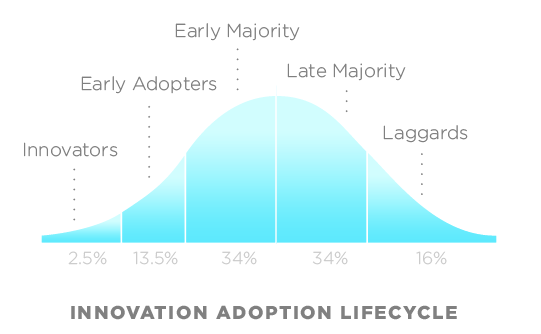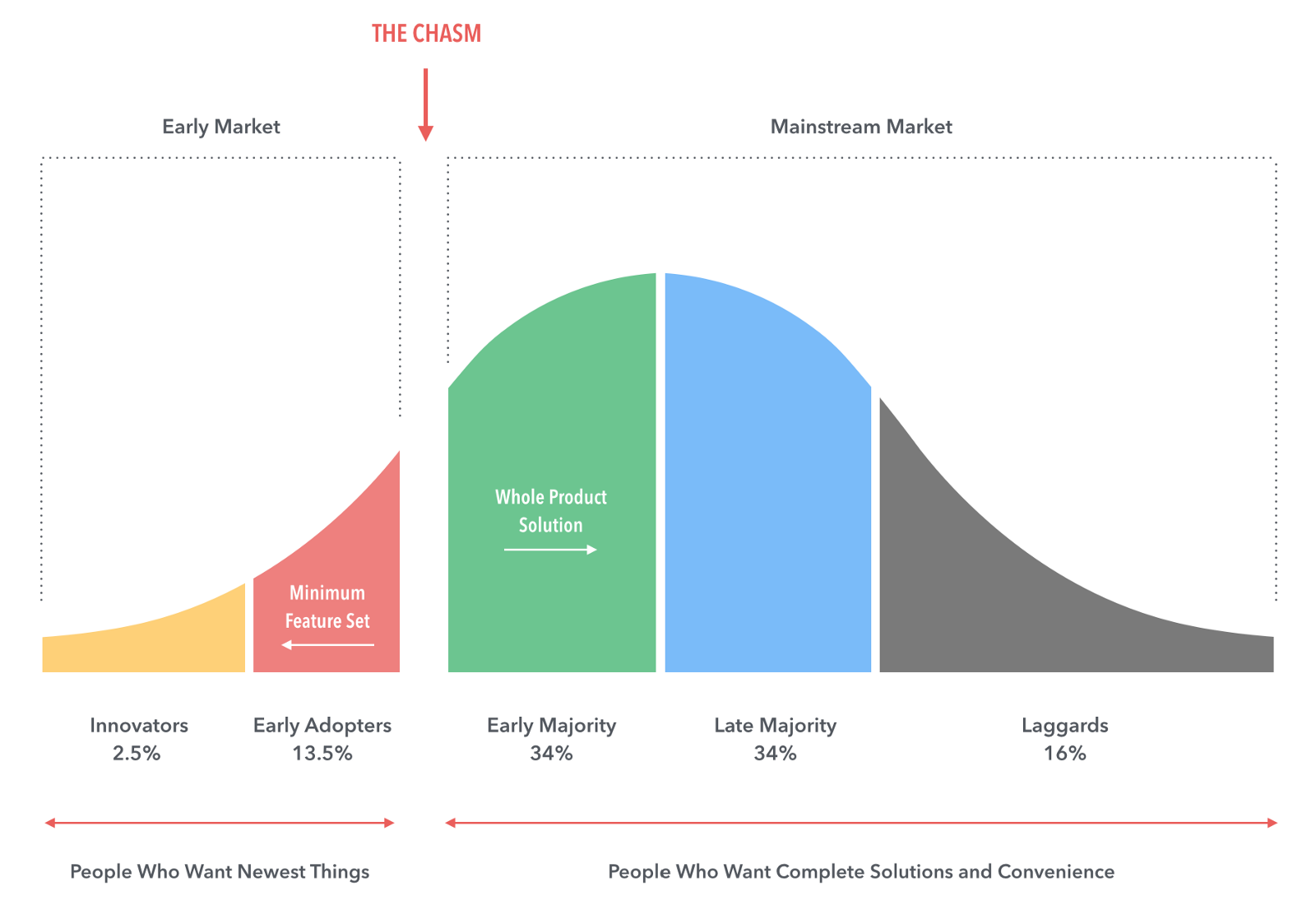What is the Chasm in the Technology Adoption Lifecycle?
Is Innovation Disruptive?
Disruptive Innovation vs. Continuous Innovation
- Does it ==change our current behavior patterns== or ==alter the other products and services we rely on==?
- There exists a range of demands for behavioral change between continuous and discontinuous innovation.
High-tech companies frequently introduce disruptive innovations. During these disruptive innovations, people become users of these products. This transition typically occurs in a normal distribution, resulting in an S-curve for user growth.
When Do People Buy High-Tech Products?

In the ==technology adoption lifecycle==, people become users of disruptive innovation products at different stages. They are:
- Innovators
- Early Adopters
- Early Majority (Pragmatists)
- Late Majority (Conservatives)
- Laggards
What is the High-Tech Market Model?
This cycle provides guidance for the ==high-tech market model==, ==showing how to develop a high-tech market by smoothly transitioning this cycle from left to right, breaking through one user group at a time.== Leveraging the momentum of the left-side user group makes it easier to market products to the right-side user group.
User momentum is crucial because it can:
- Save costs
- Accelerate the cycle if you don't want to miss opportunities in the next disruptive innovation or against competitors.
Where is the Chasm?
Observing the technology adoption lifecycle, we can see

-
Two chasms
- There is a chasm between Innovators and Early Adopters, which is the appropriate application scenario. For example, Esperanto, VRML, Second Life, 3D printing. To cross this chasm, we need a flagship product.
- There is another chasm between the Early Majority and the Late Majority, which is competitive products. For example, home automation, scanning, and project management software. To cross this chasm, we need to make the product more acceptable.
-
And a gap
-
The gap from Early Adopters to the Early Majority. Their needs are different:
- Early Adopters want a change -- they expect to achieve a leap in a competitive market. Minor issues with the product are acceptable.
- The majority of Early Majority users, who are pragmatists, want increased productivity. They want technology to ==enhance, rather than disrupt their fundamental ways of working==.
-
Incompatibility between the first two stages and the last two stages
- The behavior of Early Adopters is not a good reference for the majority of Early Majority users.
- Furthermore, the majority of Early Majority users do not want to disrupt their existing organizational structures. A good reference is crucial for their decision on whether to use this product.
-
Who really encountered this gap in 2014? For example, holograms, pen-based tablets, fuel cells, QR codes (in the U.S.), most online courses, Segways, Motorola Iridium.
-